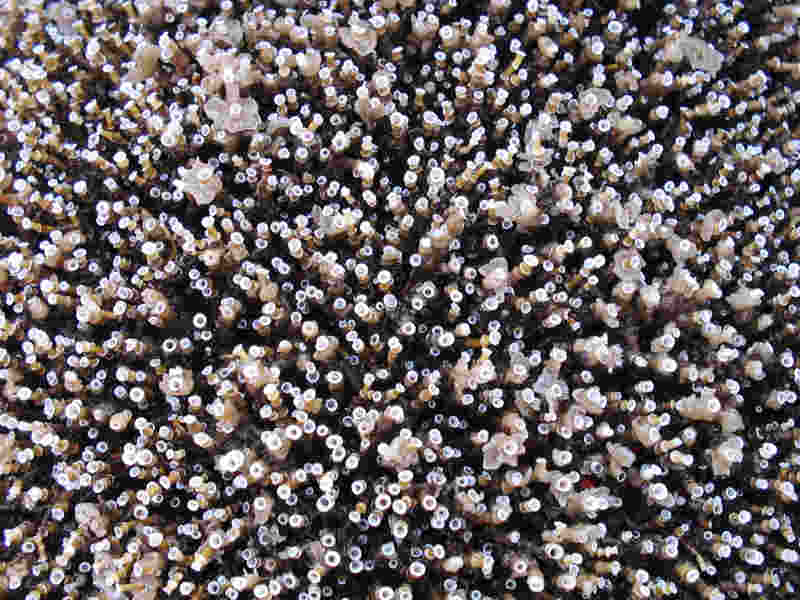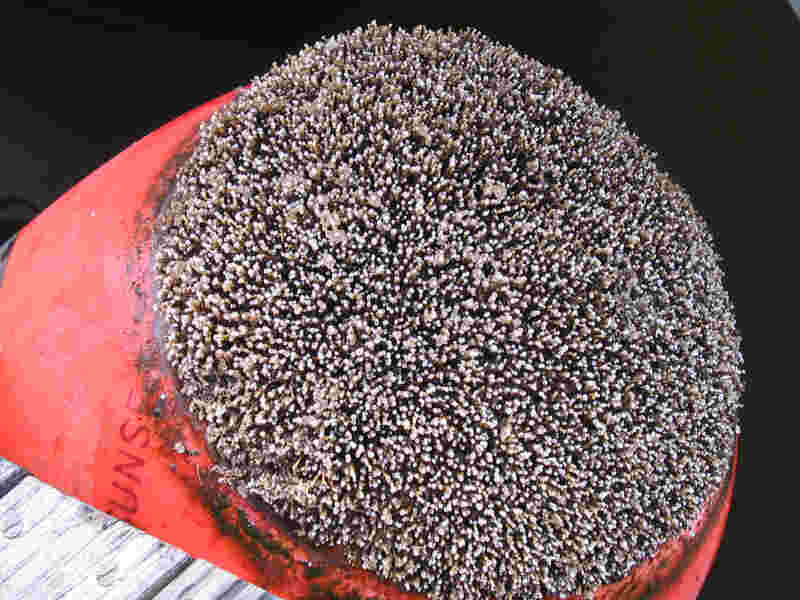A fanworm (Ficopomatus enigmaticus)
Distribution data supplied by the Ocean Biodiversity Information System (OBIS). To interrogate UK data visit the NBN Atlas.Map Help
| Researched by | Saskiya Richards | Refereed by | Admin |
| Authority | (Fauvel, 1923) | ||
| Other common names | - | Synonyms | Mercierella enigmaticus |
Summary
Description
Recorded distribution in Britain and Ireland
Found at several locations around the British Isles, including north-east, south-west and north-west England, south-west Wales and off the coasts of County Galway, Ireland.
Global distribution
Ficopomatus enigmaticus is a southern species present in the mediterranean, south Africa, Argentina, New Zealand and Australia from where it may have originated.
Habitat
Ficopomatus enigmaticus inhabits warm shallow sublittoral waters as well as brackish estuaries, docks and lagoons. This species forms reefs on different types of hard substrate including rocks and solid surfaces such as hulls of ships and pipes.
Depth range
-Identifying features
- Greenish or reddish-orange bodied tube-building fan worm.
- Body up to 2.5 cm in length and divided into 7 thoracic segments and up to 50-120 abdominal segments
- Most segments bear bundles of chaetae.
- Head with paired lobes, each bearing green, darkly banded feather-like tentacles.
- Operculum yellowish-brown, fig-shaped with dark, inwardly curved, chitinous spines.
Additional information
Ficopomatus enigmaticus is a suspension-feeder. It has a planktonic larvae and reproduces by external fertilization. This species lacks true gonads and, although generally gonochoristic, hermaphroditism has been recorded in some populations.Listed by
- none -
Bibliography
Campbell, A.C., 1982. The Hamlyn guide to the flora and fauna of the Mediterranean Sea. London: Hamlyn.
Costello, M.J., Bouchet, P., Boxshall, G., Emblow, C. & Vanden Berghe, E., 2004. European Register of Marine Species [On-line]. http://www.marbef.org/data/erms.php,
Crothers, J.H. (ed.), 1966. Dale Fort Marine Fauna. London: Field Studies Council.
Dixon, D.R., 1980. The energetics of tube production by Mercierella enigmatica (Polychaeta: Serpulidae). Journal of the Marine Biological Association of the United Kingdom, 60(3), 655-659, 1980.
Fish, J.D. & Fish, S., 1996. A student's guide to the seashore. Cambridge: Cambridge University Press.
Gee, J.M., 1963. On the taxonomy and distribution in south Wales of Filograna, Hydroides and Mercierella (Polychaeta, Serpulidae). Annals and Magazine of Natural History. Series 13, 6, 705-715,
Hayward, P., Nelson-Smith, T. & Shields, C. 1996. Collins pocket guide. Sea shore of Britain and northern Europe. London: HarperCollins.
Hayward, P.J. & Ryland, J.S. (ed.) 1995b. Handbook of the marine fauna of North-West Europe. Oxford: Oxford University Press.
Howson, C.M. & Picton, B.E., 1997. The species directory of the marine fauna and flora of the British Isles and surrounding seas. Belfast: Ulster Museum. [Ulster Museum publication, no. 276.]
MBA (Marine Biological Association), 1957. Plymouth Marine Fauna. Plymouth: Marine Biological Association of the United Kingdom.
Obenat, S., Spivak, E., & Orensanz, J.M., 2006. Reproductive biology of the invasive reef-forming serpulid, Ficopomatus enigmaticus, in the Mar Chiquita coastal lagoon, Argentina. Invertebrate Reproduction and Development, 49(4), 263-271,
Read, G.B. & Gordon, D.P. 1991. Adventive occurrence of the fouling serpulid Ficopomatus enigmaticus (Polychaeta) in New Zealand. New Zealand Journal of Marine and Freshwater Research, 25(3), 269-273.
Rouse, G.W. & Pleijel, F., 2001. Polychaetes. New York: Oxford University Press.
Datasets
Bristol Regional Environmental Records Centre, 2017. BRERC species records recorded over 15 years ago. Occurrence dataset: https://doi.org/10.15468/h1ln5p accessed via GBIF.org on 2018-09-25.
Fenwick, 2018. Aphotomarine. Occurrence dataset http://www.aphotomarine.com/index.html Accessed via NBNAtlas.org on 2018-10-01
Kent Wildlife Trust, 2018. Kent Wildlife Trust Shoresearch Intertidal Survey 2004 onwards. Occurrence dataset: https://www.kentwildlifetrust.org.uk/ accessed via NBNAtlas.org on 2018-10-01.
National Trust, 2017. National Trust Species Records. Occurrence dataset: https://doi.org/10.15468/opc6g1 accessed via GBIF.org on 2018-10-01.
NBN (National Biodiversity Network) Atlas. Available from: https://www.nbnatlas.org.
OBIS (Ocean Biodiversity Information System), 2025. Global map of species distribution using gridded data. Available from: Ocean Biogeographic Information System. www.iobis.org. Accessed: 2025-07-01
South East Wales Biodiversity Records Centre, 2018. INNS Data: All Taxa (South East Wales). Occurrence dataset: https://doi.org/10.15468/crhjs2 accessed via GBIF.org on 2018-10-02.
South East Wales Biodiversity Records Centre, 2018. SEWBReC Worms (South East Wales). Occurrence dataset: https://doi.org/10.15468/5vh0w8 accessed via GBIF.org on 2018-10-02.
Citation
This review can be cited as:
Last Updated: 03/07/2008




